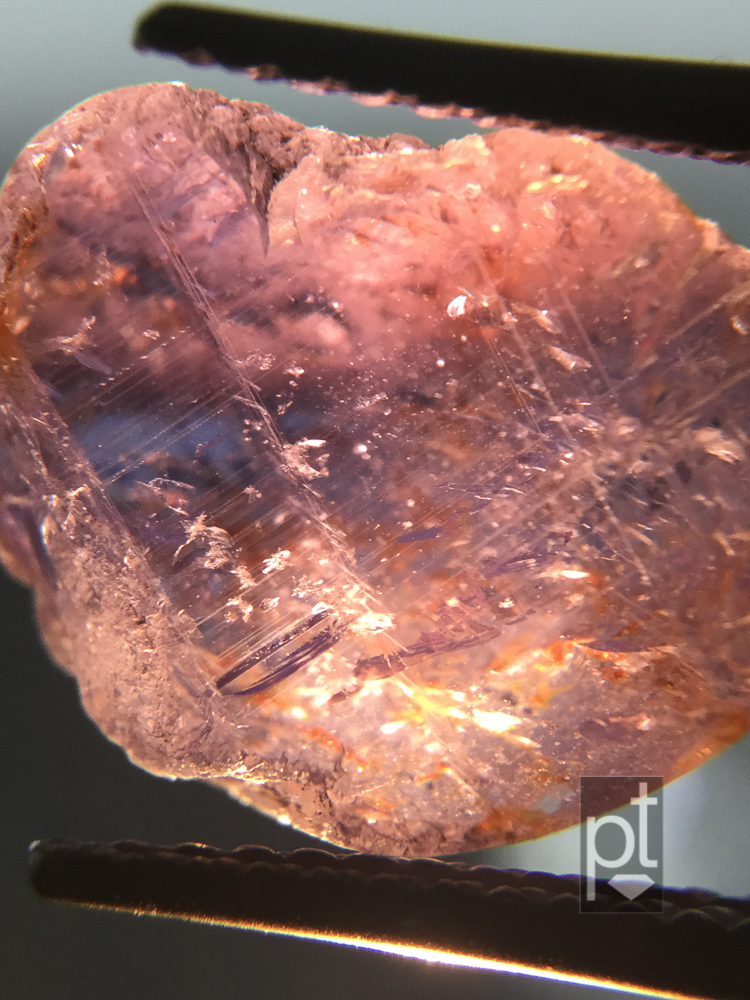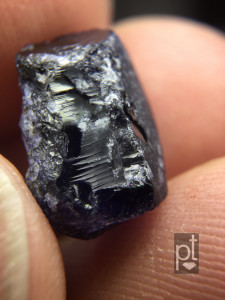
One of my clients purchased a fine selection of larger sized sapphire rough from Umba, Tanzania. The stones were all nicely shaped and great colors. But in reviewing the stones for cutting, I noticed one that didn’t seem quite right. It seemed to be a water-worn sapphire cobble, but the fracture pattern on one side struck me as very unusual for Umba.
This fracture surface looks like ribs or maybe a washboard. It’s possible for sapphire to fracture this way, but I’ve never seen it in natural rough, so I began to look more closely. Then it dawned on me that the rough had a distinct curved profile. Natural sapphire rough may come in a water-worn cobble that suggests an oval, but this curve suggested a quarter circle; I started to think about synthetic sapphire boules.
When synthetic sapphire is produced by the flame-fusion method, it is grown as cigar-like shapes called a boule. Because of the way the synthetic crystal is formed, these boules are necessarily split in half length-wise to relieve internal stress. This suspect rough was beginning to look a lot like a boule section. Consider these two images: the suspect rough is on the left and a polished cross-section of flame-fusion synthetic sapphire is on the right.
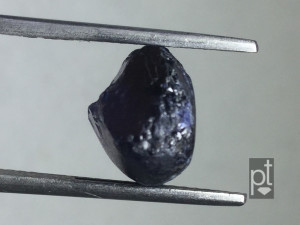
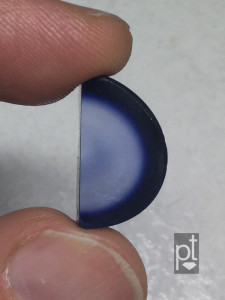
At this point, it was clear to me that this wasn’t an Umba sapphire rough. Had I noticed this at the buying table in Tanzania, I would have both rejected the stone and had a pointed discussion with whoever offered me the piece. But since I was in my shop and had consent of the owner, I was able to window the stone and get a look inside.
A quick check of the refractive index confirmed that the stone is indeed sapphire (synthetic spinel rough looks similar). But my microscope gave the most telling view:

None of these inclusions look natural. The perfectly spherical bubbles are characteristic of glass and low-grade synthetics. The arced spangle of blue dots oriented in lines has no natural analog I’m aware of. Additionally, those spangles occur at a distinct color-change boundary (hard to see in the image, the left portion of the rough is near-colorless, the right is deep blue). I would expect this kind of effect near the end of a synthetic sapphire boule when the manufacturer is starting or stopping whatever color doppant is used to create the blue color in otherwise colorless synthetic sapphire.
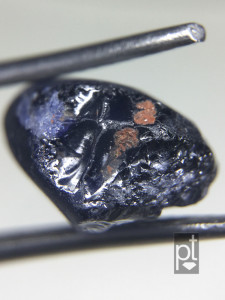
The synthetic origin of this stone is now obvious, but it certainly wasn’t at first. Someone took a good bit of time to make this low-grade synthetic look close enough to a natural Umba sapphire to pass inspection in a parcel. In fact, whoever did this even went so far as to add fake dirt to make it look like the rough was fresh from the ground
(hard to show in a picture, but in person and using a 10x loupe it’s obvious this material was glued into place).
Just for comparison sake, here is an image of the typical inclusions you would see in natural Umba sapphire rough:
